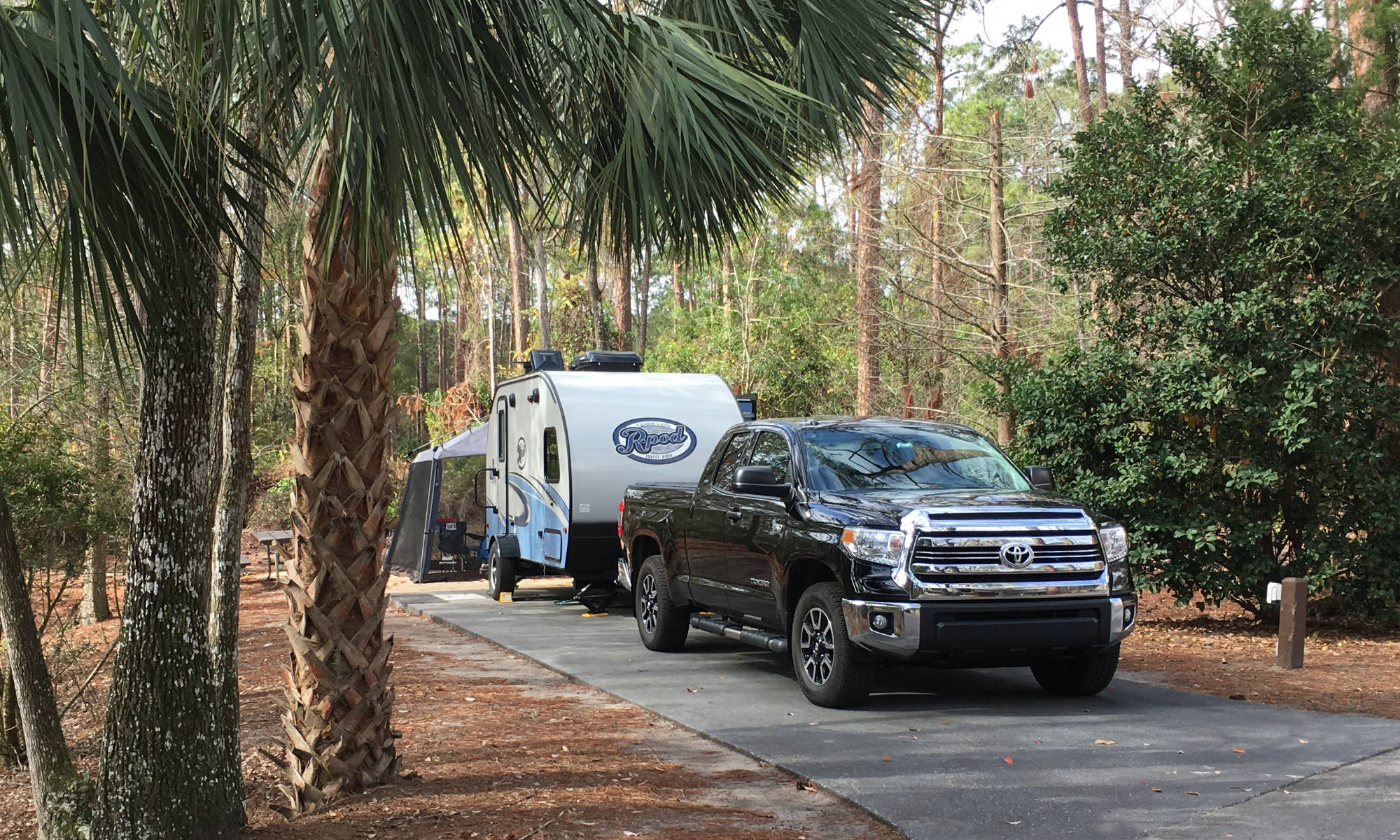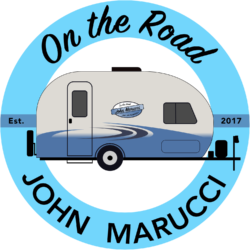Click here to sign up for reminders when new blogs are posted.
A point of confusion for many people is whether they should buy and use a weight distribution hitch for towing. In today’s topic, we’ll take a hands-on approach and demonstrate what a weight distribution hitch does to the towing dynamics of your travel trailer and tow vehicle.
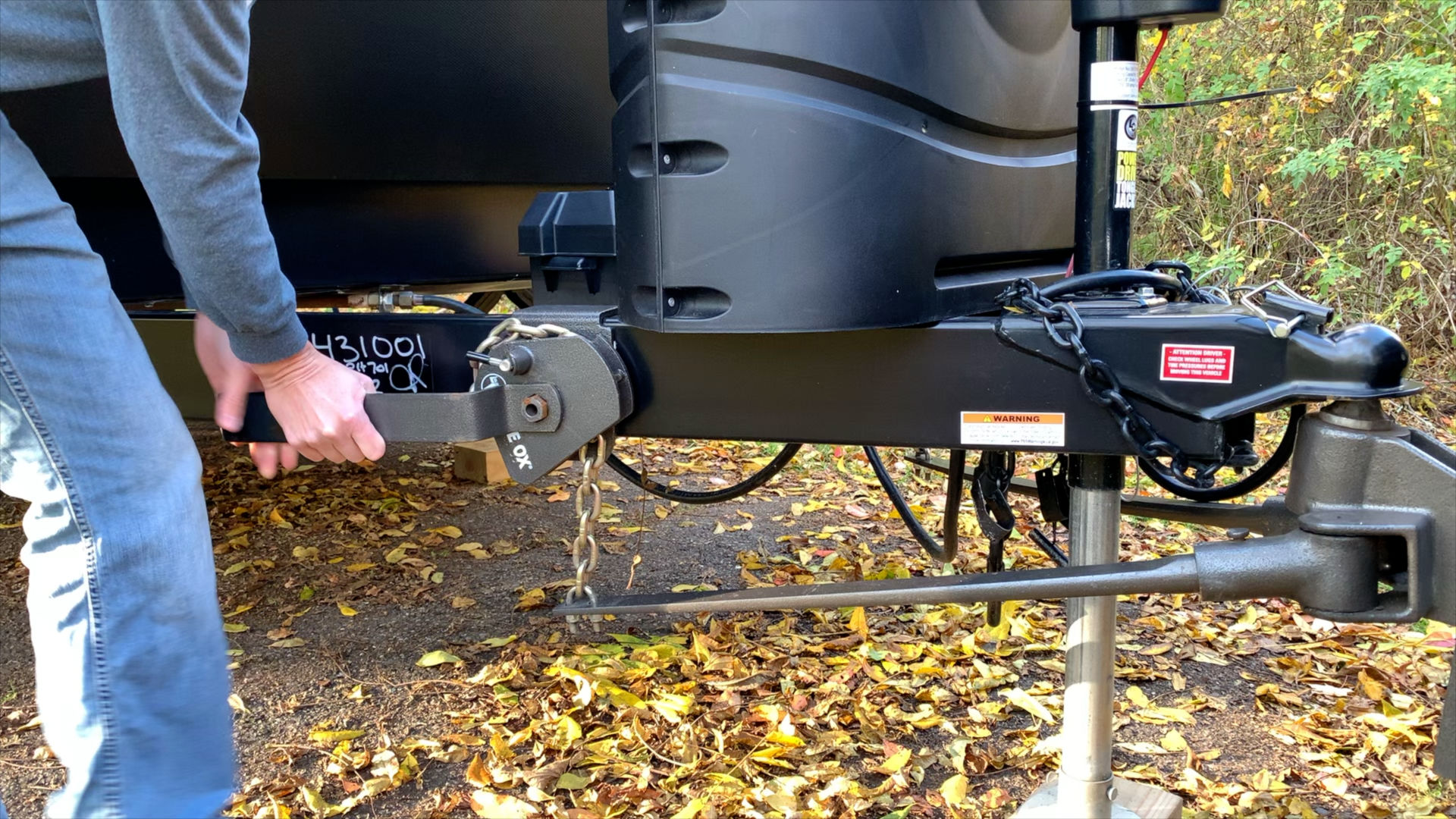
The purpose of a weight distribution hitch is to balance the load of the trailer and tow vehicle to provide a safer towing experience. If the trailer is leaned back too much or nose up, the weight of the trailer may be too heavy behind the trailer axle. This can cause serious sway issues. On the other hand, if the trailer is leaned forward too much or nose down, the front axle of the tow vehicle will rise. This can make steering feel sloppy and potentially dangerous. Either extreme can be a problem when towing. A weight distribution hitch acts like a spring and moves weight forward (or backward) between the trailer and tow vehicle depending on how it is set.
Let’s look at this dynamic using my 2017 Toyota Tundra 4×4 truck, my 2020 Keystone Bullet travel trailer, and my Blue Ox Sway Pro WDH using 1,000 lb. tension bars. My trailer weighs 4,900 lbs. unloaded with a factory hitch weight of 580 lbs.
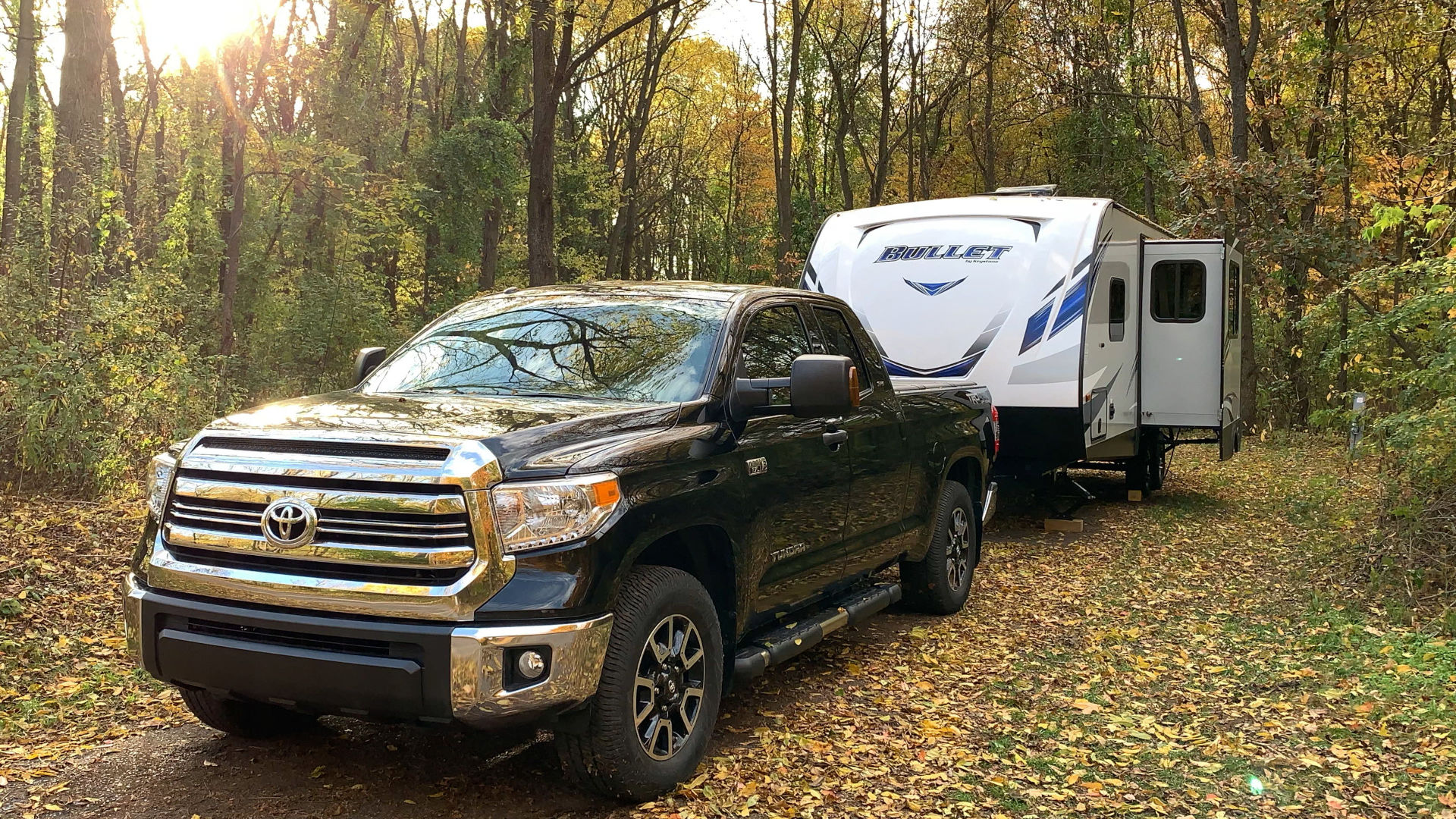
After a recent camping trip, we decided to visit a CAT Scale located at a TA Travel Center truck stop. The truck had some gear in the bed and the trailer also had normal camping gear. We did empty all holding tanks and the freshwater tank, including water from the water heater, so the trailer had no additional water weight.
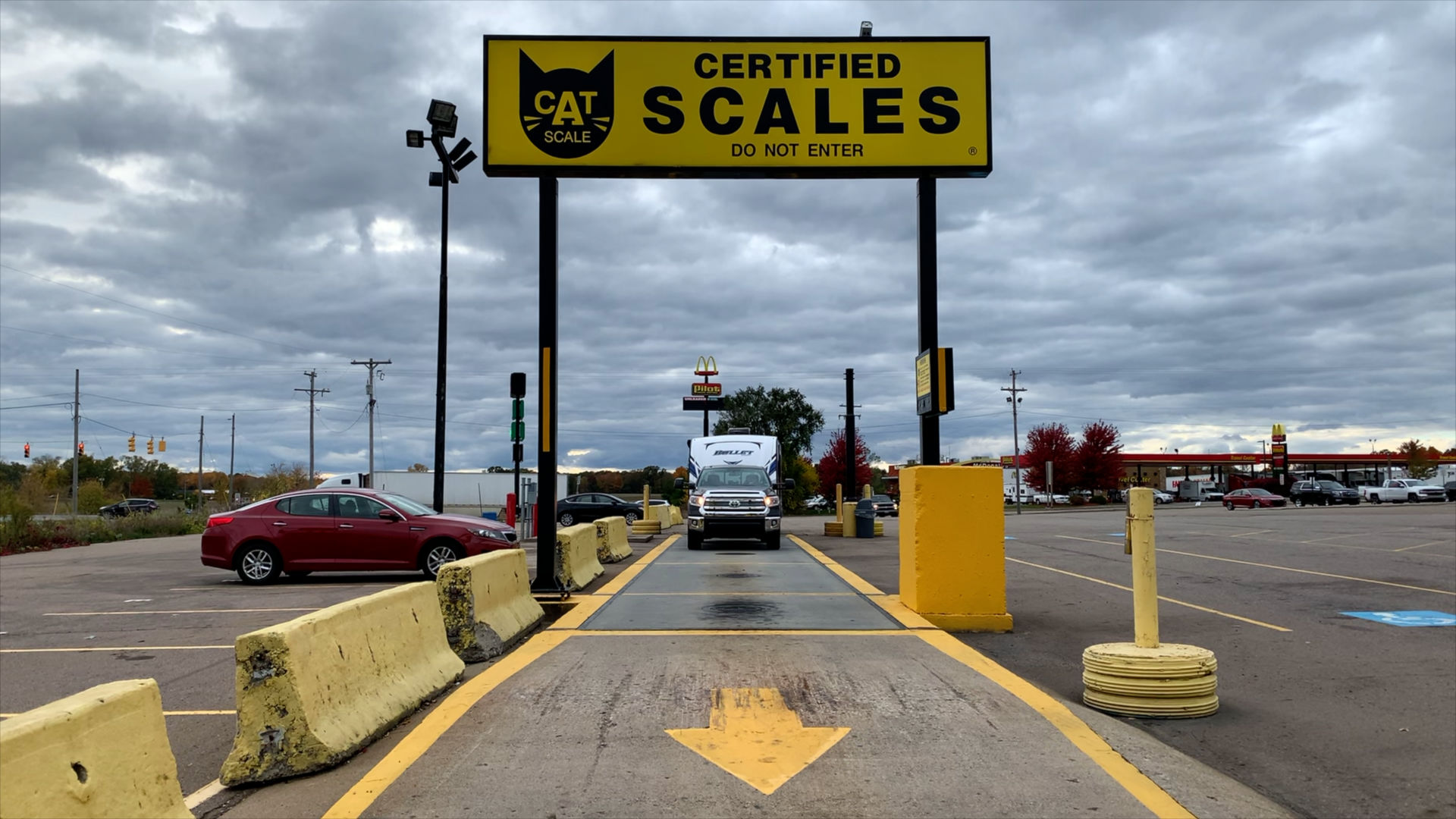
We used the scale four times in order to determine the effect of using a weight distribution hitch. With a CAT scale, if you are unfamiliar, you pull the tow vehicle and trailer up onto the scale and rest your front tow vehicle tires on the first weigh plate, your rear tow vehicle tires on the second plate, and your trailer tires on the third weigh plate. Once weighed, the scale will yield the weight for each axle.
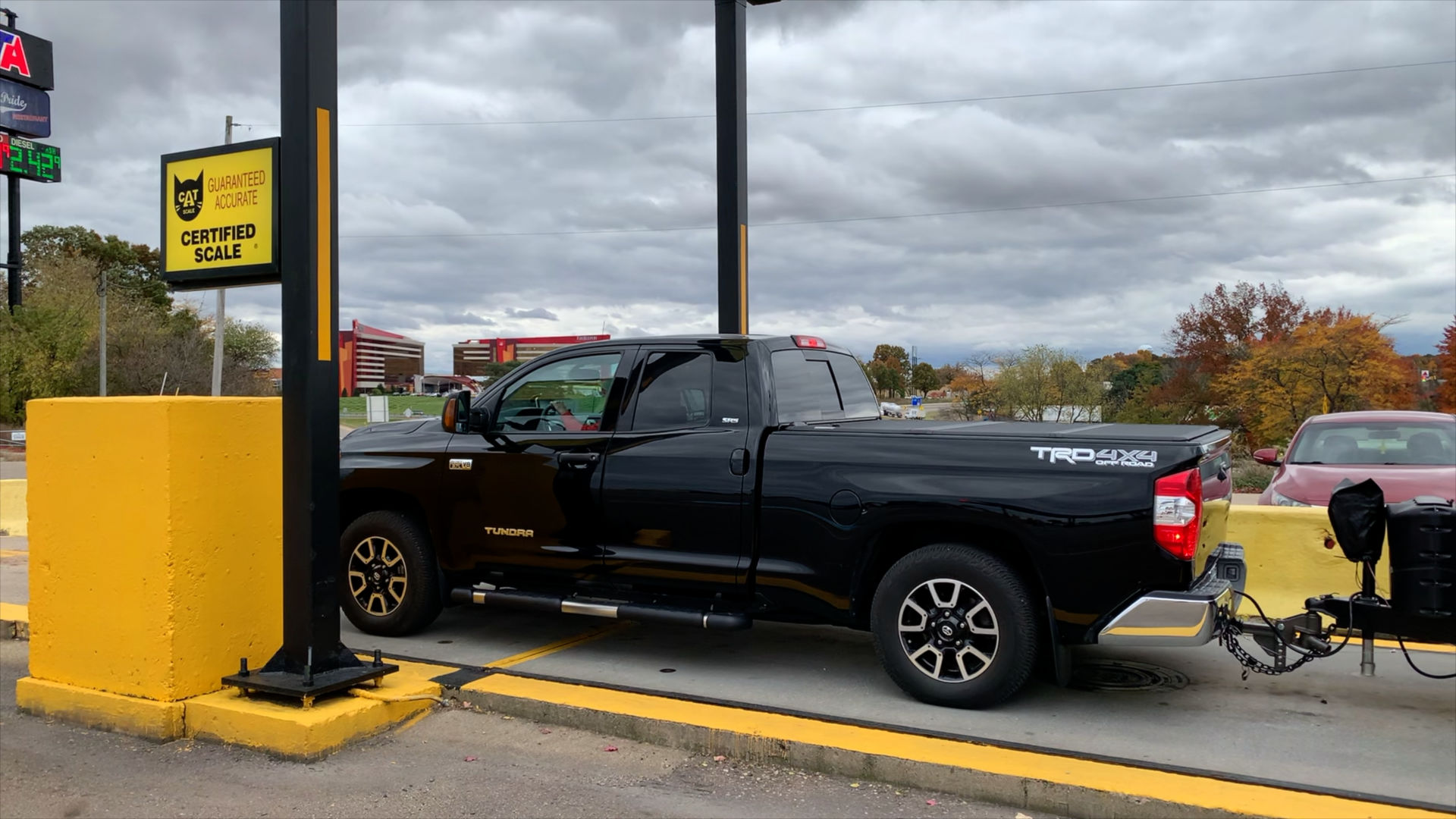
Our first weigh was for the truck without the trailer. We wanted to get a baseline of how the truck axles weighed given the factory stance with the camping gear. This would be how we would compare the effects of the weight distribution hitch.
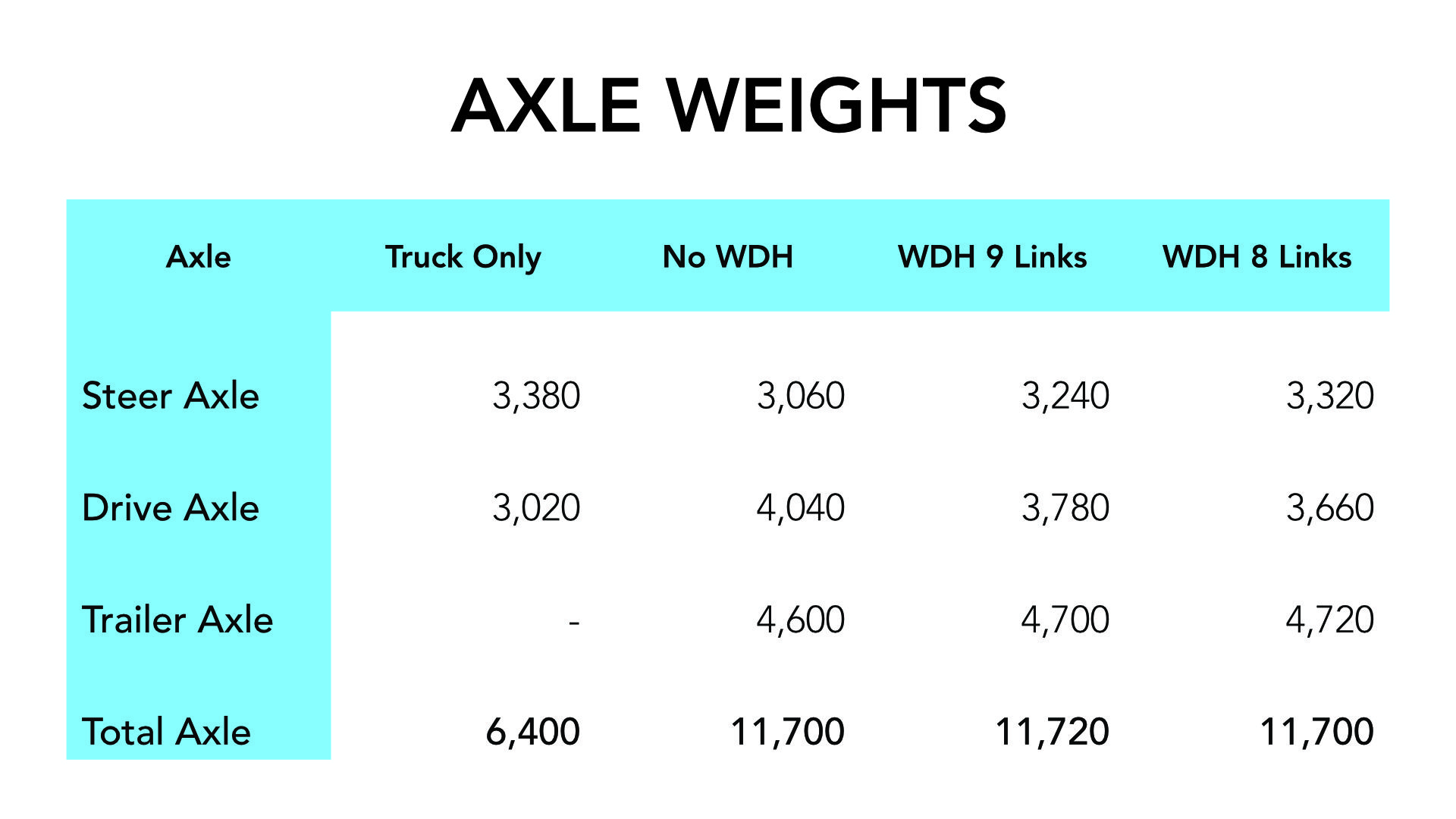
The steering axle shown here is the front truck axle, the drive axle is the rear truck axle, the trailer axle is the weight of the trailer axle, and the total axle is the sum of all measurements. Of note is that almost 53% of the weight is on the front axle.
Next, we wanted to see how adding the trailer to the truck would affect the axle weights of the truck without using the weight distribution hitch. This is very interesting and will provide a baseline to use to compare against towing with a WDH. Here are the weights:
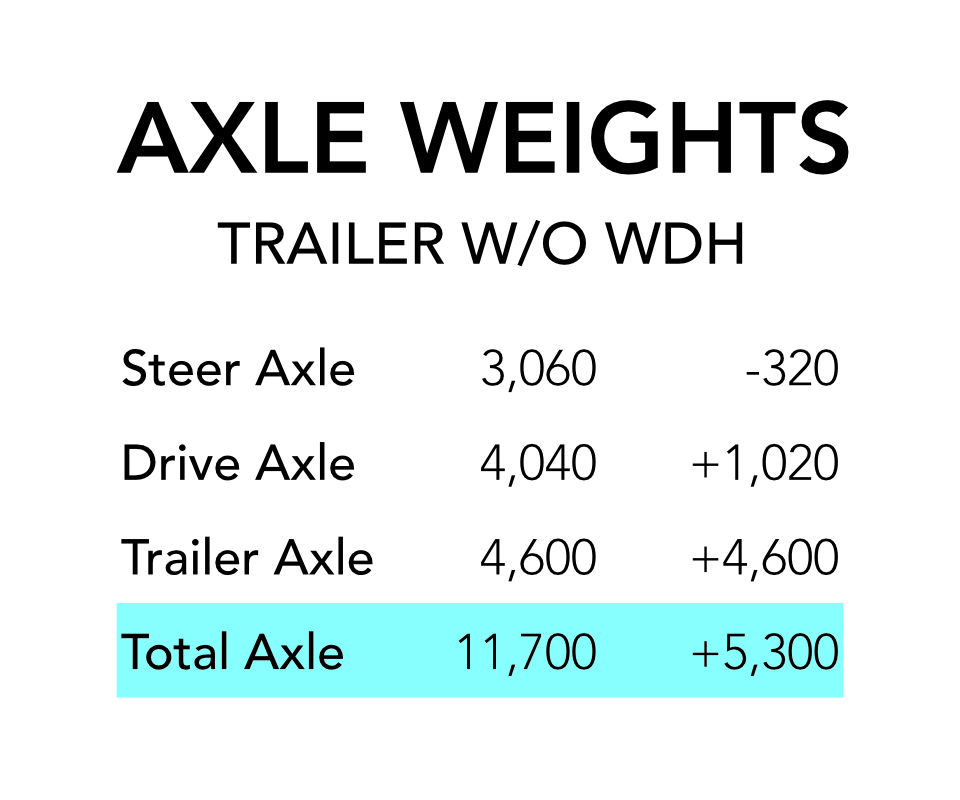
Notice how the weights have changed significantly, with the front steer axle losing over 300 lbs. and the rear drive axle gaining over 1,000 lbs.
Our third weigh was with the Blue Ox WDH attached at 9 links of bar tension, which is fairly common. Here are the weights:

We immediately see the effects of the WDH on the truck axles. The front steer axle gained 180 lbs. and the rear drive axle lost 260 lbs. Meaning the truck moved significantly back toward factory stance.
Finally, we weighed with the Blue Ox WDH set to 8 links of bar tension, effectively increasing the tension on the bars and moving more weight to the front of the truck.
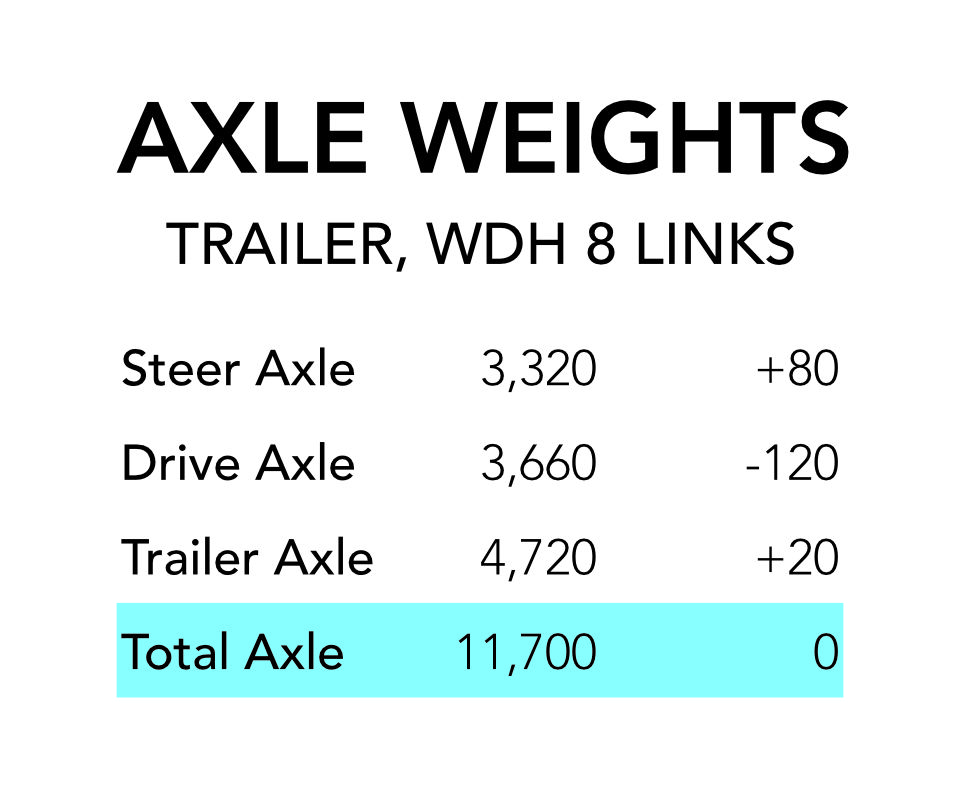
With this adjustment, we see the truck move even closer to factory stance, with an addition 80 lbs. added to the front steer axle and another 120 lbs. removed from the rear drive axle.
So, let’s look at a few scenarios given this information…
How does a trailer without a WDH affect my tow vehicle stance?
Truck Only vs Trailer with No WDH. If you plan to tow a trailer and forgo the use of a WDH, be aware of the change in the weight dynamics of your tow vehicle. In my case, we removed 320 lbs. from the front truck axle by adding the trailer without a WDH. That’s a lot of weight loss and will likely result in a sloppy steering feel. Also, if the front of my truck isn’t as planted, the braking situation could be adversely affected. So, to me, this is a safety concern given my truck and the weight of my trailer. While my truck can handle the added 1,020 lbs. of payload on the rear axle, this is not a great dynamic to me as it will cause significant rear sagging and put addition and unnecessary wear on the real springs.

How does a trailer with a WDH affect my tow vehicle stance?
Truck Only vs WDH with 8 Links. Our next comparison is taking the truck alone and looking at what the weights are with 8 links on the Blue Ox WDH. This will show the effect of the hitch at a high-tension setting. In this case, we only lose 60 lbs. from the front steer axle vs the factory stance. This is how I usually tow this trailer and I never feel like the front of the truck isn’t anything but firmly planted. The steering is solid. On the rear of the truck, we have only added 640 lbs., limiting sag and avoidable wear on the springs.

How does making a small adjustment to the WDH change axle weights?
Trailer with WDH 9 Links vs WDH 8 Links. Our final comparison is to show what happens if you adjust the Blue Ox WDH by just one chain link in order to increase bar tension to move weight forward on the tow vehicle. Just one chain link does make a real weight difference. The front steer axle adds 80 lbs. and the rear drive axle loses another 120 lbs. vs 9 links. Just one link makes a pretty big difference.

This is why I like the Blue Ox, as it is very easy to change link settings based on how your trailer is set up, geared up, or watered up. If I know I’ll be camping close by, for example, and need to bring water in the freshwater tank, adding over 300 lbs. to the trailer, I can adjust the tension higher to compensate for the additional weight.
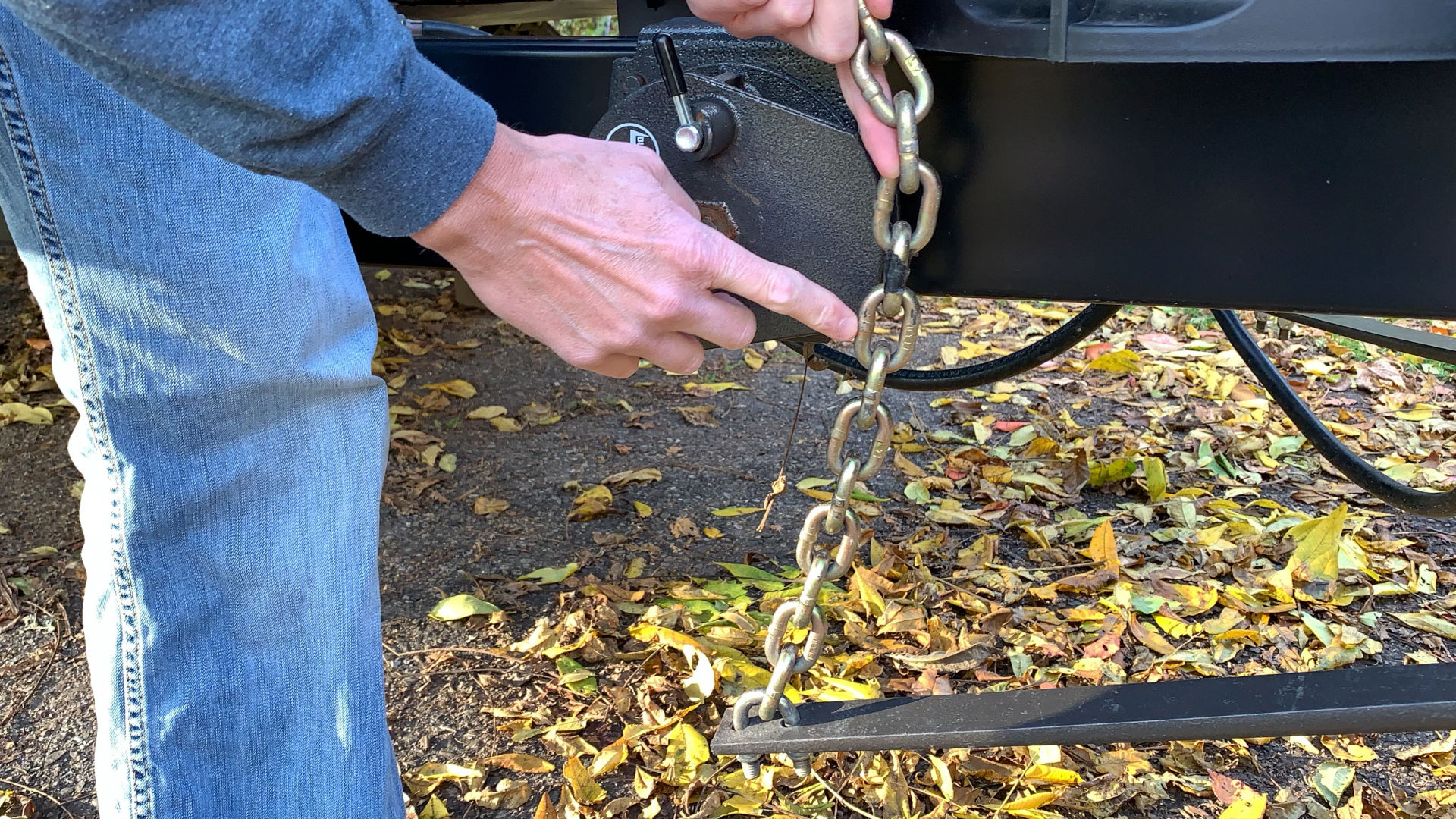
Other WDHs can adjust as well, and if you use a different brand WDH, you should understand how to adjust it in order to be flexible to your towing situation. Also, this entire analysis is based on a very specific towing setup, my 2017 Tundra and my Keystone Bullet. Every set up will likely be different and I would highly recommend taking some time at a local truck stop CAT scale and understanding your towing dynamics.
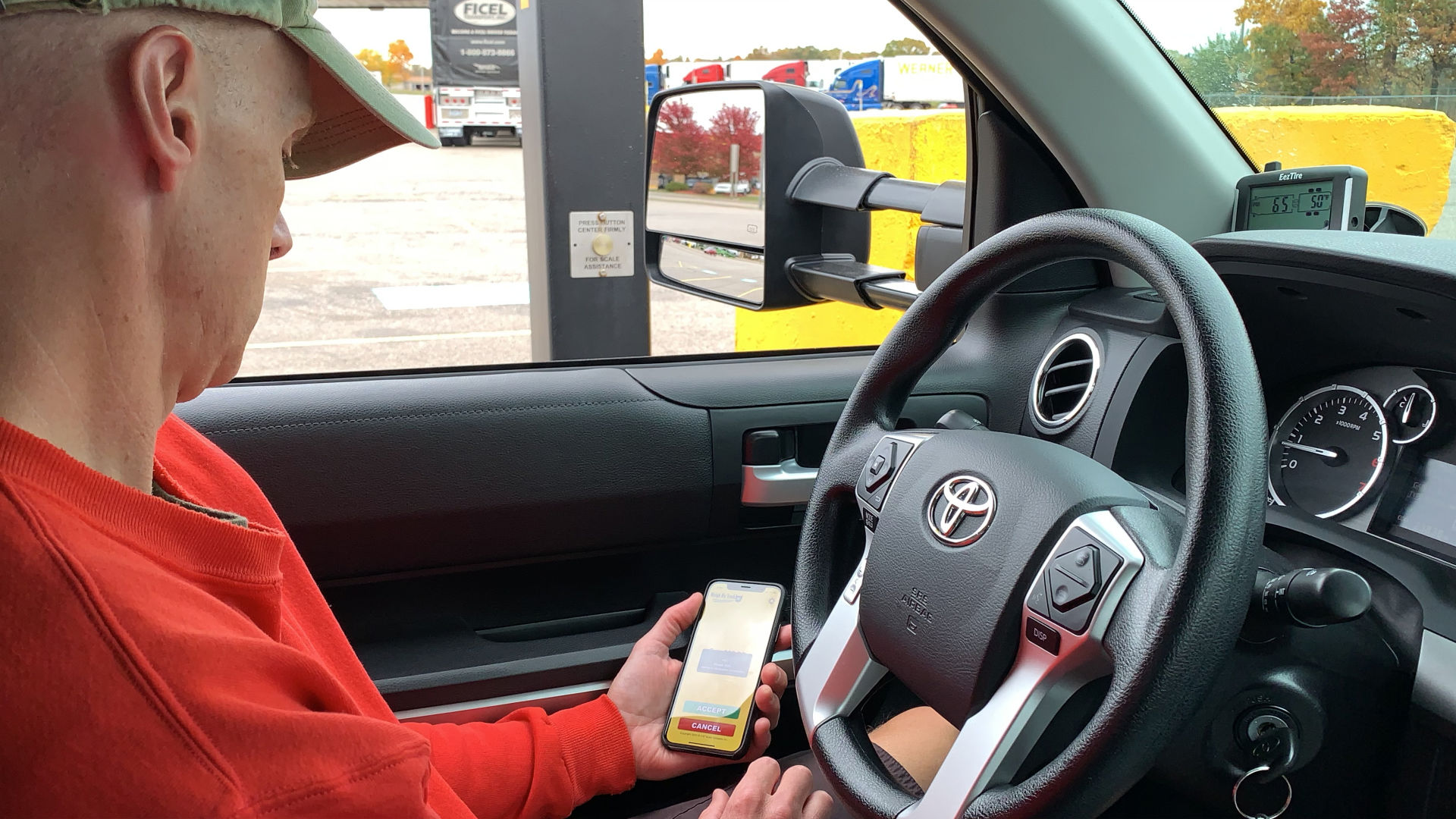
It is very easy to set up a CAT Scale account. They have a smart phone app that allows you to use CAT Scales nationwide. With the app, you don’t need to interact with anyone to get your results. My initial weigh cost $12 and each reweigh was $2.50. So, for just under $20, you can get these four measurements using your tow vehicle and weight distribution hitch. By doing so, you will have a much better idea of the current state of your towing dynamics.
If you are just getting started, a big caveat here is setting the weight distribution hitch up properly to begin with. This will need to be done on a level surface and with the hitch mount properly adjusted. Unless you are very confident in doing this and also have the proper torque wrench and sockets, you should work with a local RV shop for the initial installation. You don’t want to start off with an unlevel dynamic that the weight distribution hitch can’t adjust enough for to counter-balance.
Hopefully, this quick analysis helps with understanding what happens to towing dynamic when employing a weight distribution hitch. I have used a WDH for years, mainly because I like the feel of my tires firmly planted when driving. With the Blue Ox, I also have the ability to adjust the hitch as needed on the fly. I think it is an added safety feature that makes sense.
All the best!
We’d love for you to join the On The Road Team by subscribing to the YouTube channel. If you want to dive deeper, we put more content and photos on Instagram and Twitter @JohnMarucci. You can also follow John on Facebook @JohnMarucciOnTheRoad.
As always, thanks to our teammates who support the channel by watching the YouTube Ads and by starting their shopping from the On The Road Amazon Storefront at: amazon.com/shop/johnmarucci. Your support is greatly appreciated!
Watch the more than 100 videos from John Marucci – On The Road!
